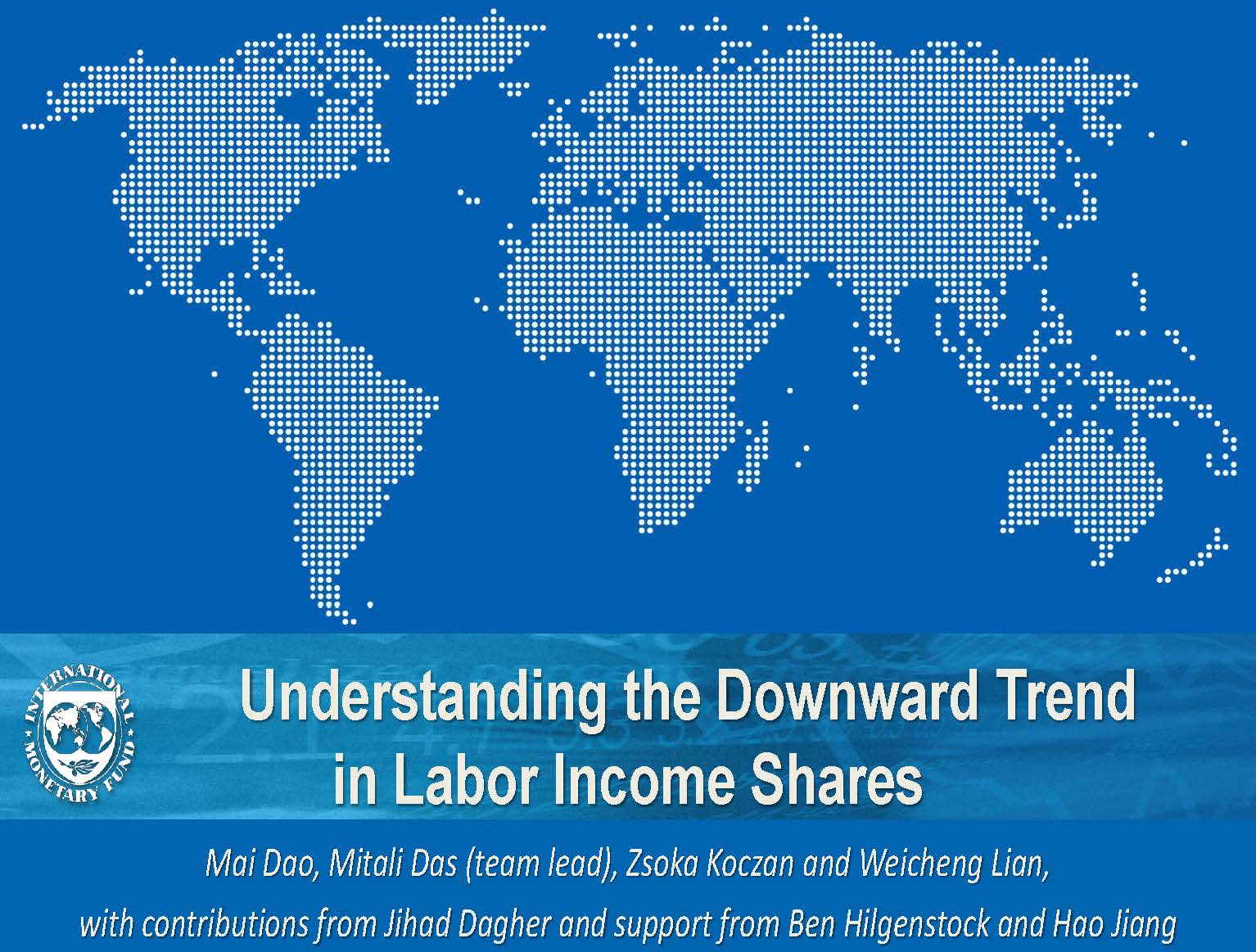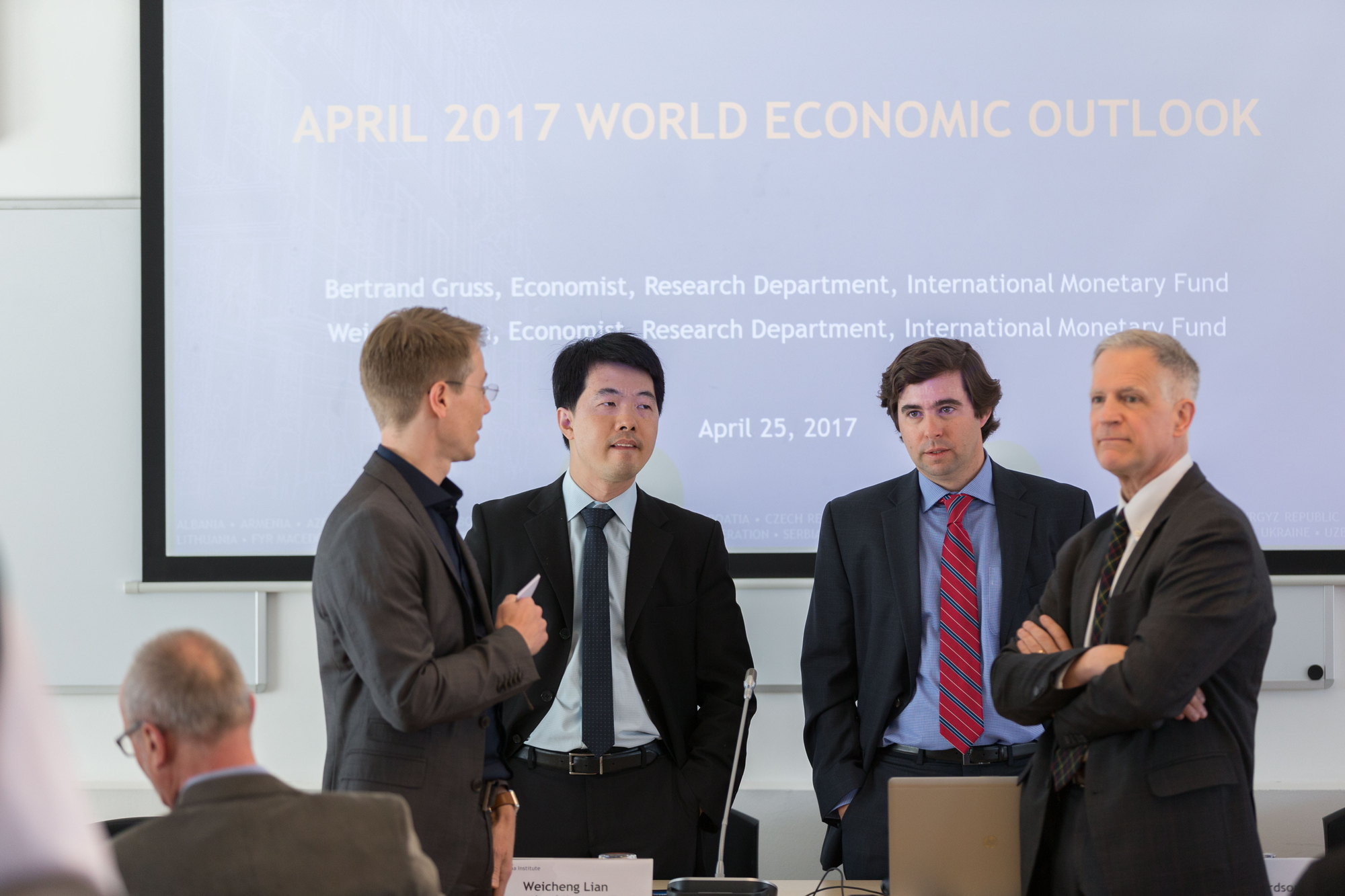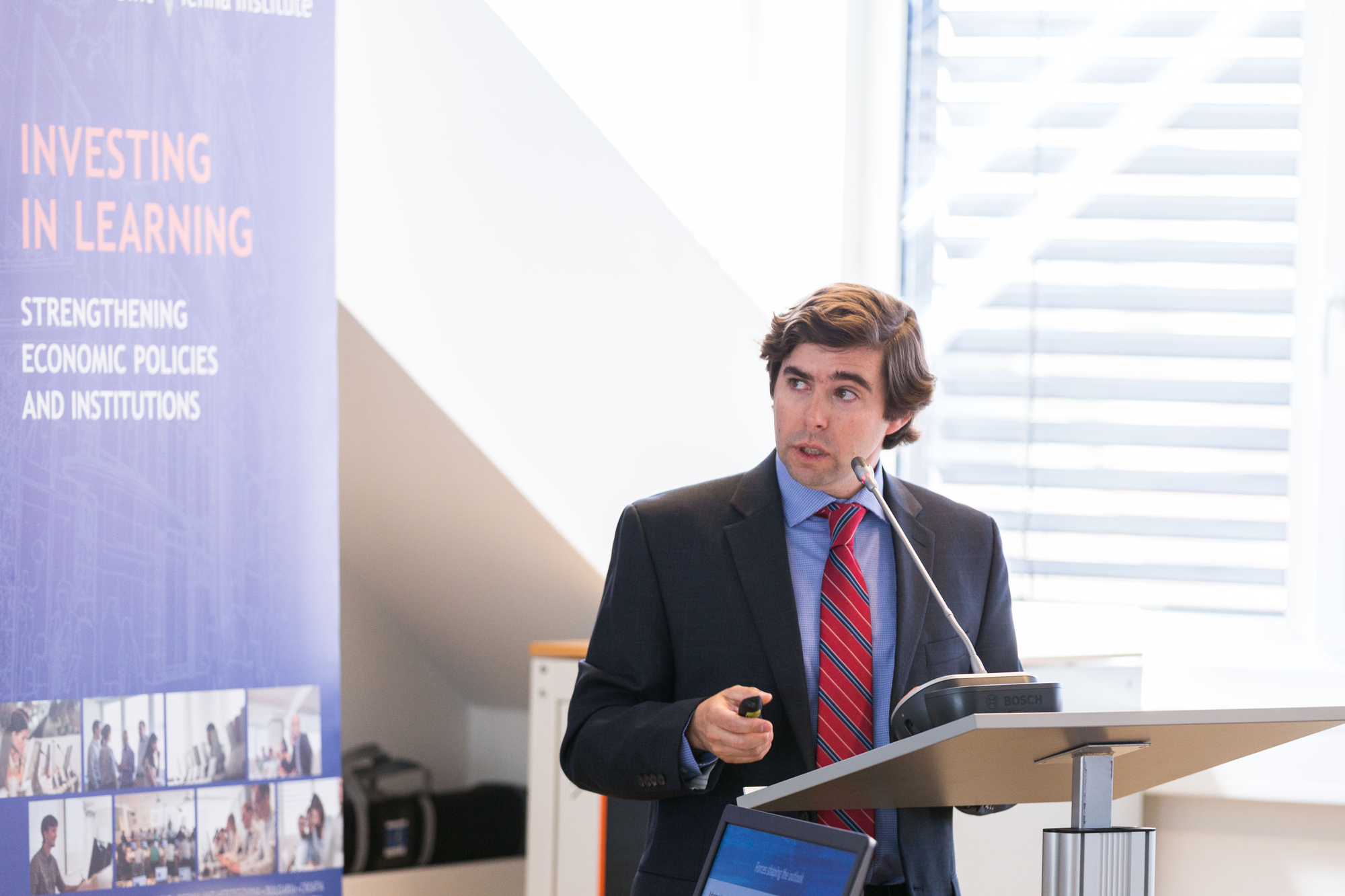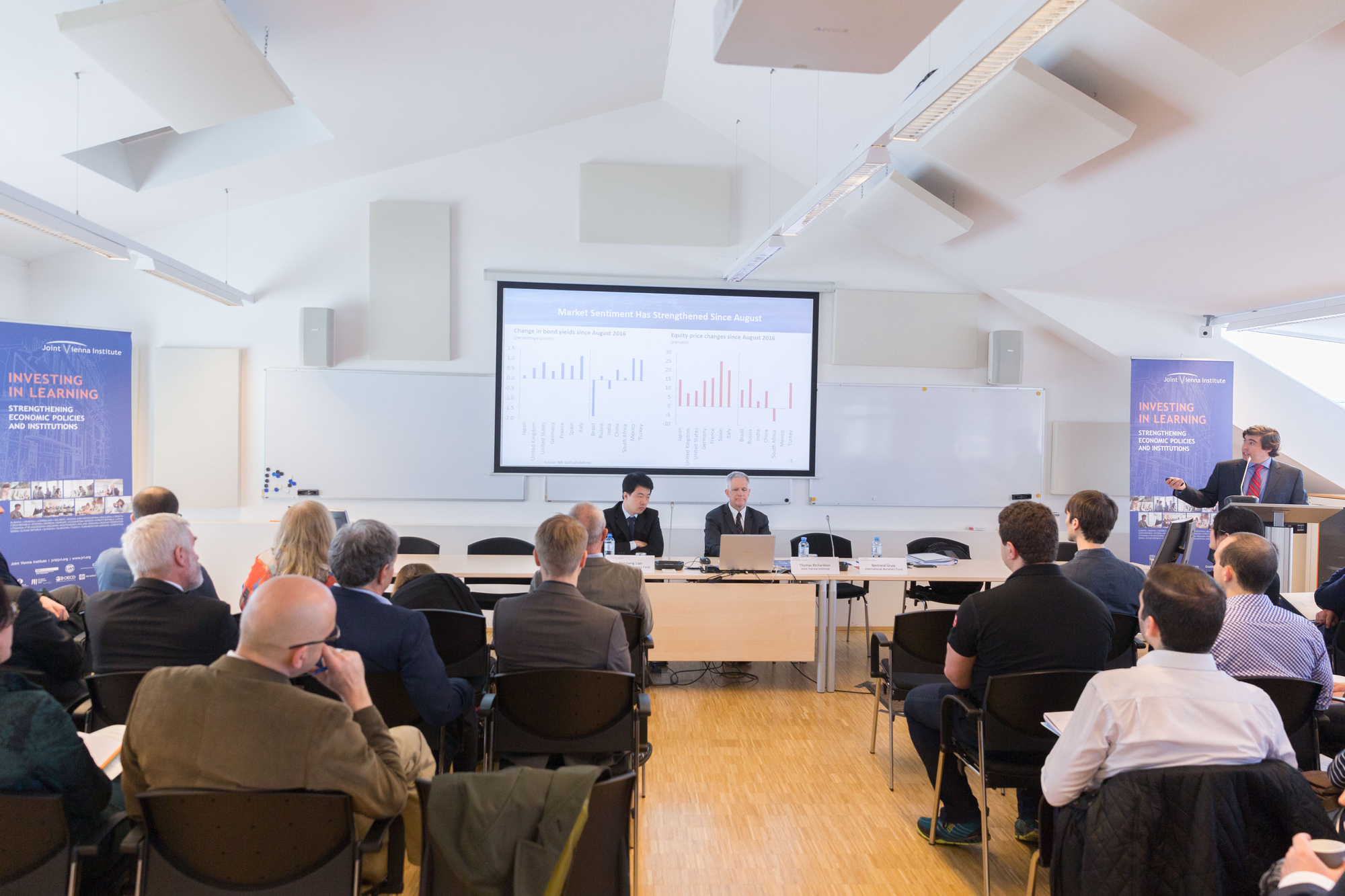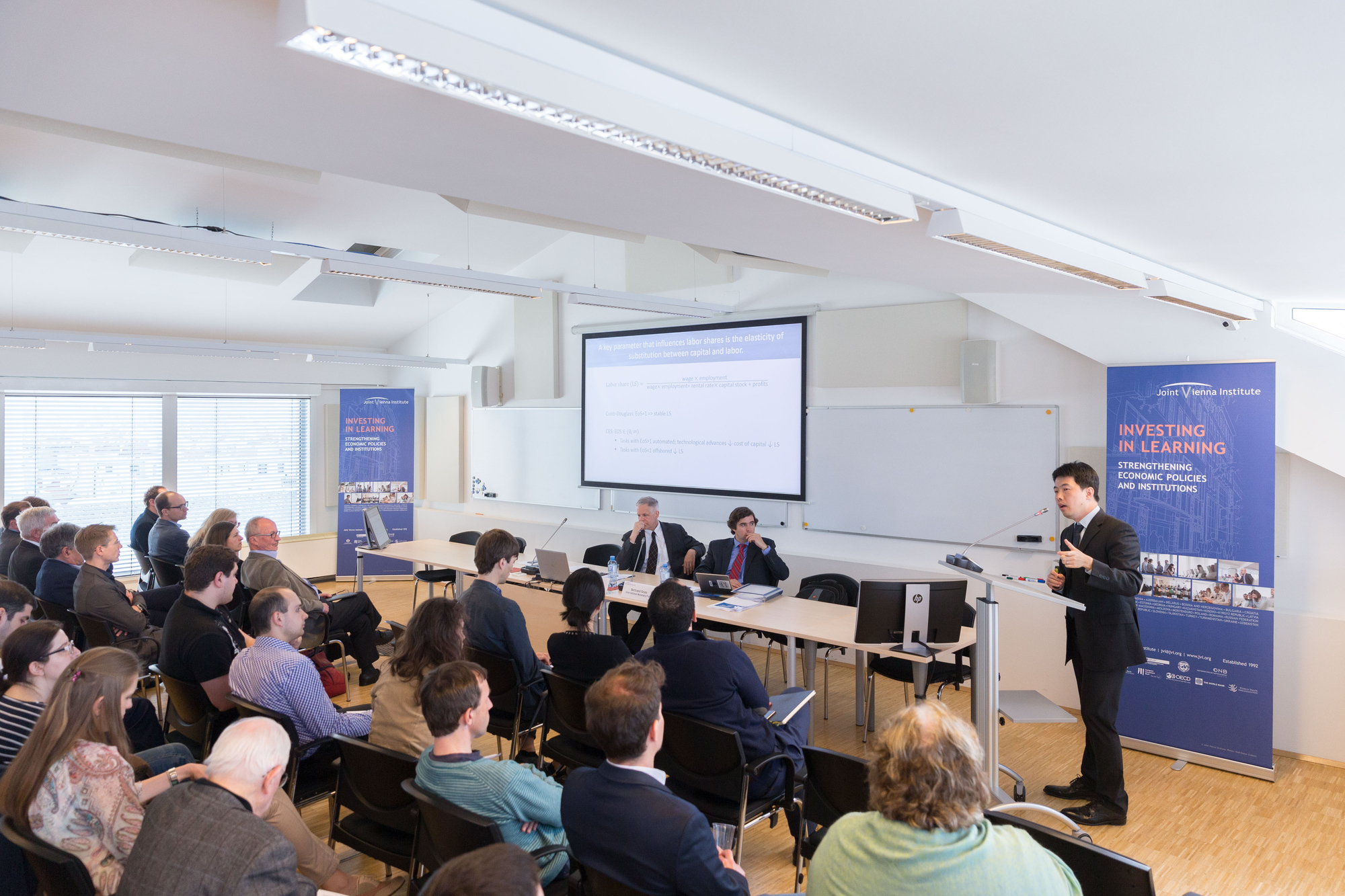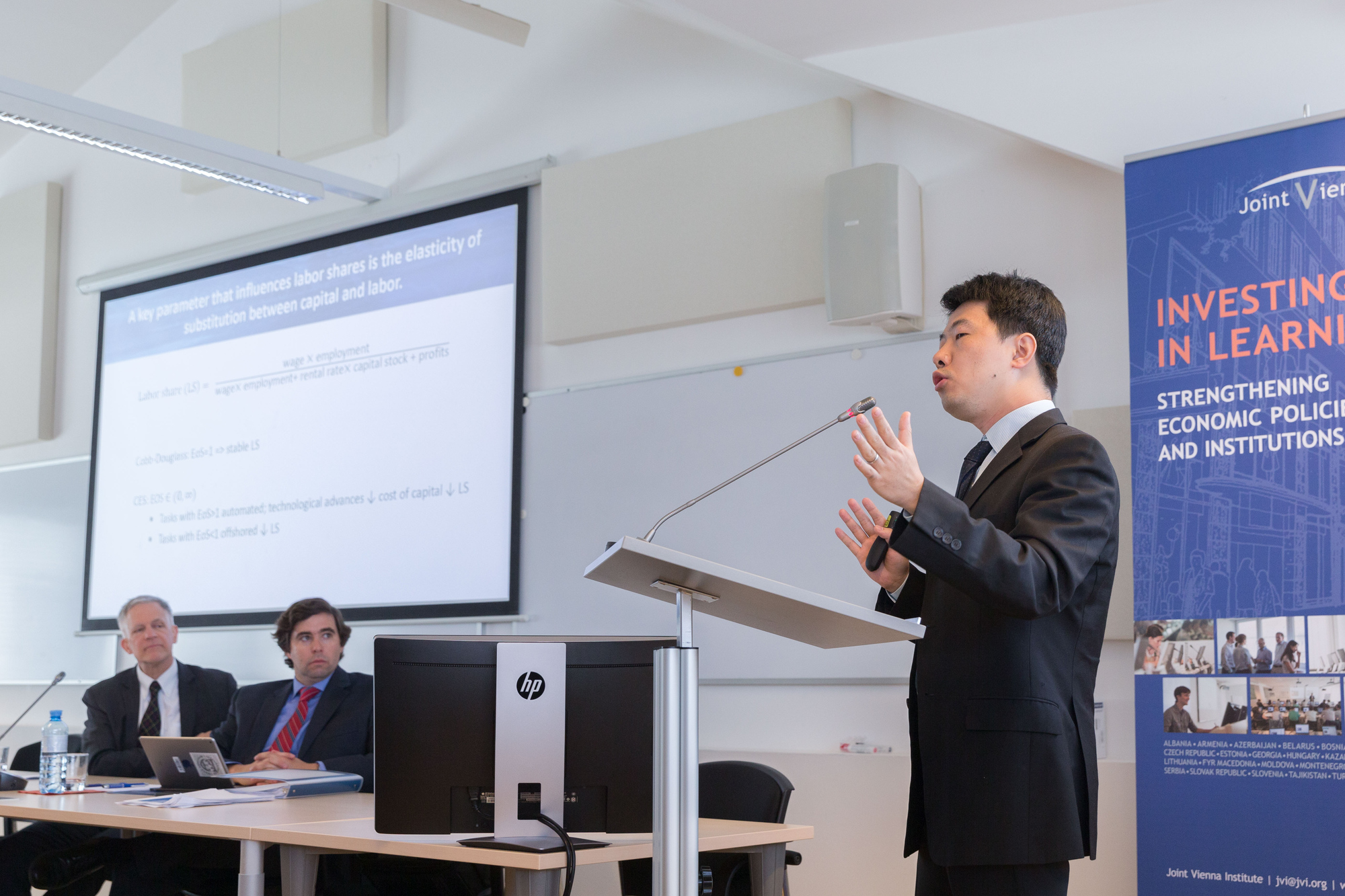Summary
How do potentially persistent structural shifts in the global economy affect growth in emerging market and developing economies? Why has the labor share of income declined in the last decades? On April 25, 2017, Mr. Bertrand Gruss and Mr. Weicheng Lian of the IMF Research Department visited the JVI to present the analytical chapters of the latest World Economic Outlook (WEO) which explore both these questions, and to summarize the WEO’s global outlook. Mr. Thomas Richardson, JVI Director, chaired the event.
Mr. Gruss reviewed the IMF’s latest growth projections. Compared to the IMF October forecasts, the projections for advanced economies improved slightly for both 2017 and 2018, by 0.2 percentage points to 2%. However, for emerging market and developing economies they fell slightly from 4.6% to 4.5% in 2017 and stayed the same at 4.8% in 2018. Although these economies currently account for 75% percent of growth in global output and consumption, in 90% of them real income per capita is still less than half that of the US. As these economies have integrated into the global economy, external conditions—through the demand, financial, and terms-of-trade channels—have become increasingly influential determinants of their medium-term growth prospects. Structural shifts in the global economy may lead to an external environment that offers less support for emerging market and developing economies than in the post-2000 period. In this context, these economies could get a better growth outturn from weaker external conditions by strengthening their institutions, maintaining trade openness, permitting exchange rate flexibility, and reducing the vulnerabilities arising from high current account deficits, external borrowing, and significant public debt.
In the second part of the presentation, Mr. Lian noted that, similar to the secular trend decline in advanced economies’ labor share of income since the 1980s, it appears that labor shares have also been trending down since the 1990s in more than half of emerging market and developing economies. In advanced economies, about half of the decline can be attributed to technological changes that have led to the automation of routine occupations. Another quarter can be explained by global integration, which led to offshoring of labor-intensive tasks, thus lowering the labor share in tradable sectors. Moreover, the movement of labor shares differs by sector. At the global level, the sharpest decline in labor share was in manufacturing, while some sectors such as accommodation witnessed an increase. This development in part reflects the fact that manufacturing has been exposed to a high level of routinization, while human interaction in the accommodation sector may be less amenable to automation. In emerging market and developing economies global integration has been the main driver, with technology playing only a small part. Global integration leads to an offshoring of labor-intensive tasks from advanced economies to emerging market and developing economies. In the receiving countries these tasks are capital-intensive compared to existing tasks, leading to a rise in the capital shares in both source and recipient countries. While it has been largely benign in emerging market economies, declining labor income share has been associated with a displacement of workers in advanced economies, especially for middle-skilled workers performing routine tasks. So while both technological progress and global economic integration have been drivers of growing global prosperity, the key challenge to policymakers is to find ways to spread the benefits more widely.
The rich discussion that followed was mainly concerned with the assumptions underlying the analysis, particularly possible future US tax cuts and China’s growth rate. The authors explained that the current forecasts assume tax cuts to be spread equally between corporate and personal taxes, but they do not reflect possible increases in infrastructure spending. In the case of China, the forecast considers a gradual slowdown of the economy, but there is a possibility of disruptive adjustments associated with rapidly expanding credit which are not included in the baseline. Another question related to historical trends in the labor share, especially during the industrial revolutions. Based on a data set from the Bank of England going back to the beginning of the First Industrial Revolution, the corresponding chapter of the WEO offers an analysis of the labor share and the Gini coefficient as indicator for inequality over the last three centuries. While the labor share did not decline during both industrial revolutions, the Gini coefficient increased during the first and decreased during the second industrial revolution.
Thomas Mitterling, JVI



